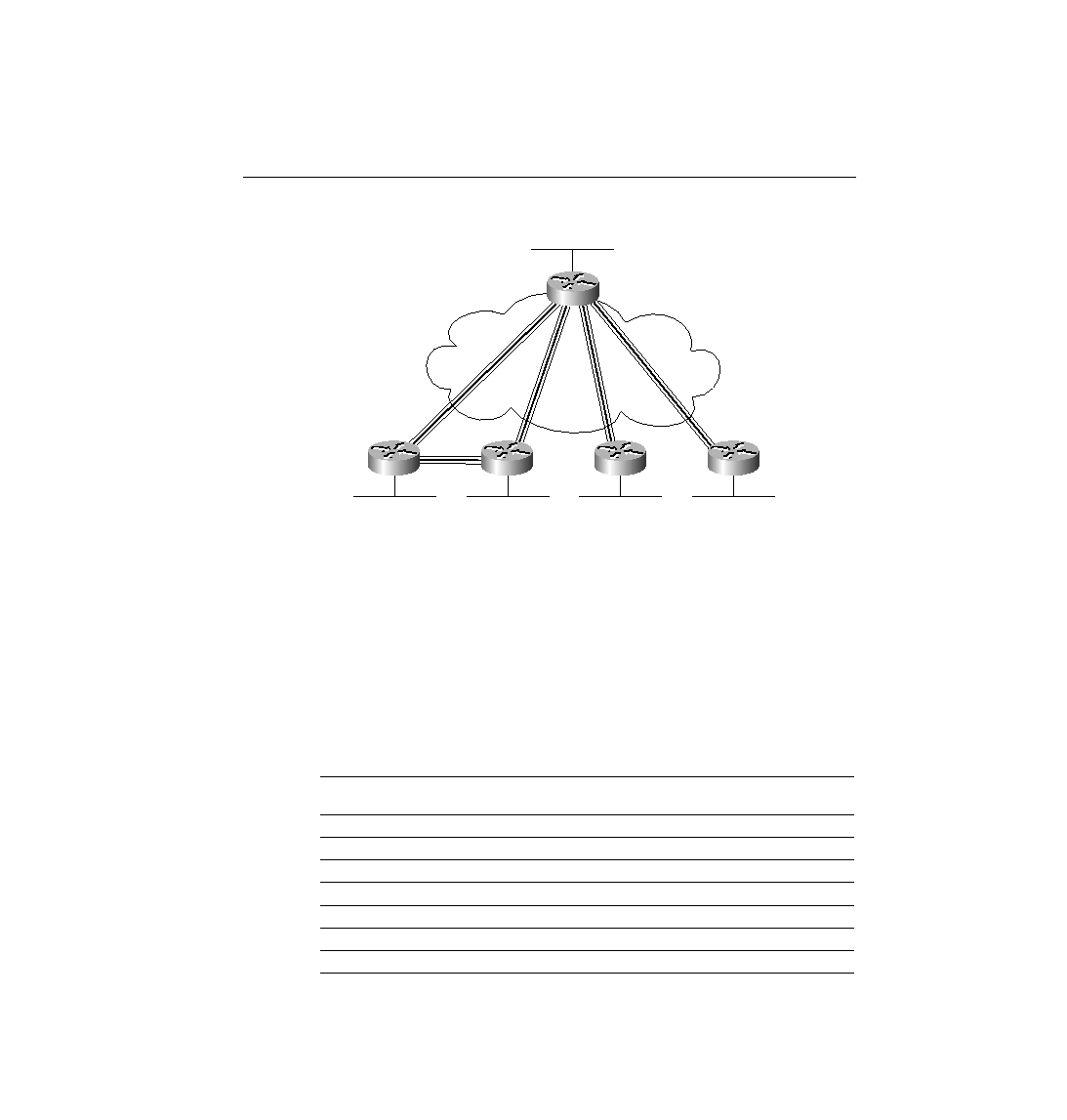
Layer 3 group; five subnets and five IPX networks would be needed for the Frame Relay
network. However, if Routers A, B, and C are considered alone, they meet the criteria that each
can send packets directly to each other, like a full mesh. This would allow Routers A, B, and C
to use one subnet and IPX network. The other two VCs--between A and D, and between A and
E--are treated as two separate Layer 3 groups. The result is a total of three subnets and three
IPX network numbers.
used. Point-to-point subinterfaces are used when a single VC is considered to be all that is in
the group. Multipoint subinterfaces are used among Routers A, B, and C in Figure 8-13. The
section "Frame Relay Configuration," later in the chapter, provides full configurations for all
three cases illustrated in Figure 8-11, Figure 8-12, and Figure 8-13. Table 8-15 summarizes the
addresses and subinterfaces used.
Network
Type